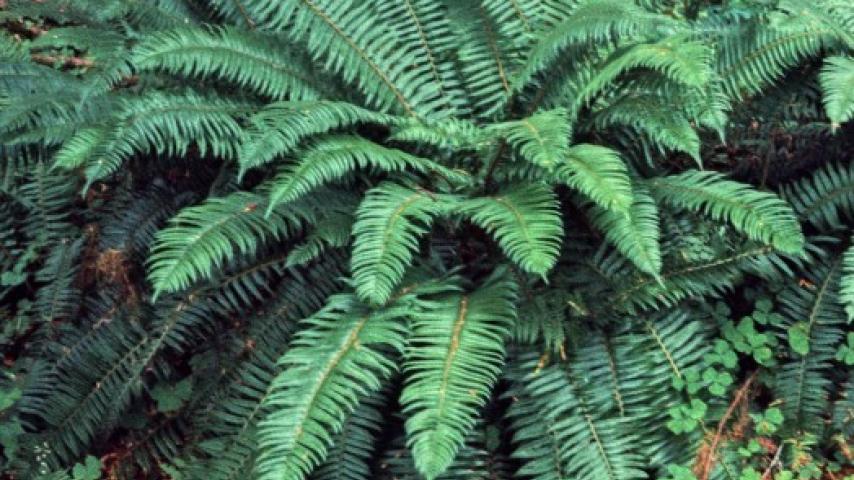Sword Fern (Polystichum munitum)
This evergreen fern is abundant in the understory of moist mature conifer forests in the Pacific Northwest.

KINGDOM Plantae - PHYLUM Pteridophyta - CLASS Pteridopsida - ORDER Polypodiales - FAMILY Dryopteridaceae
It is easily recognizable by its long, pinnately compound fronds in clusters that point upward from the ground, in optimal habitats over a meter in height. Each division (pinna) of those large fronds is 10-15 cm long, with an upward-pointing lobe at the base and serrated edges.
Fern reproduction is in part by spores, which are produced within sporangia. The sporangia are typically clumped together into prominent sori (singular sorus) under the leaves. The patterns made by sori are not only beautiful but characteristic of the different groups of ferns. From the prominence of the sori, one would think that ferns reproduce by shedding spores, which then sprout into new ferns. But it’s not that simple. In fact, ferns exhibit an alternation of generations, in which the spores actually grow into tiny gametophyte ferns, so small they are overlooked without careful search.
Each gametophyte produces male and female reproductive structures. The male structures are called antheridia, and they produce sperms that move by means of flagella. The female structures are archegonia. Each archegonium produces an egg, which is fertilized by sperms from the same or other plants. This zygote (fertilized egg) develops into the sporophyte generation, what we think of as the fern.
Ferns are relatively free of herbivores, toxic to them because of defense chemicals produced in the plant body. But there are moth larvae (caterpillars) that use them as food plants, and mountain beavers (unrelated to beavers), a forest rodent of the Pacific Northwest, also eats them freely. In spring, when other foods may not have been available, the rhizomes were roasted and eaten by many Native American and First Nation tribes.

